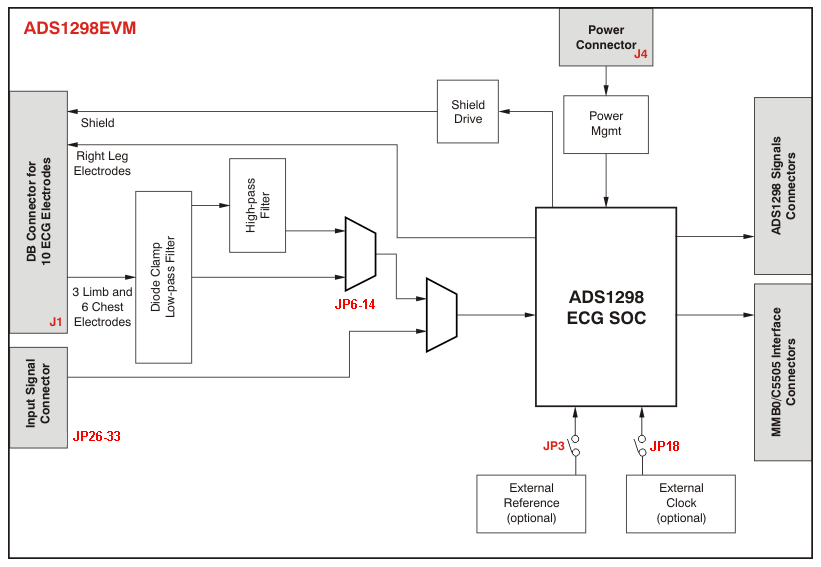SBAU171D May 2010 – January 2016 ADS1198 , ADS1298
-
ADS1298ECG-FE/ADS1198ECG-FE
- Trademarks
- 1 ADS1298ECG-FE/ADS1198ECG-FE Overview
- 2 Quick Start
- 3
Using the ADS1298ECG-FE Software
- 3.1 Application User Menu
- 3.2 Top-Level Application Controls
- 3.3 About Tab
- 3.4 ADC Register Tab
- 3.5 Analysis Tab
- 3.6 Save Tab
- 4 ADS1x98ECG-FE Input Signals
- 5 ADS1298ECG-FE/ADS1198ECG-FE Hardware Details
- ASchematics, BOM, Layout, and ECG Cable Details
- BExternal Optional Hardware
- CSoftware Installation
5 ADS1298ECG-FE/ADS1198ECG-FE Hardware Details
The ADS1298 ECG front-end evaluation board is configured to be used with the TI MMB0 data converter evaluation platform. The ADS1298ECG-FE board is a four-layer circuit board. The board schematic and layout are provided in Section A.
The ADS1298ECG-FE can be used as a demonstration board for standard, 12-lead ECG applications with an input configuration of 10 electrodes. Users can also bypass the 12-lead configuration and provide any type of signal directly to the ADS1298 through a variety of hardware jumper settings (JP26-33; see Section A.4). External support circuits are provided for testing purposes such as external references, clocks, lead-off resistors, and shield drive amplifiers.
Figure 36 shows the functional block diagram with important jumper names for the board.
 Figure 36. ADS1298ECG-FE Front-End Block Diagram
Figure 36. ADS1298ECG-FE Front-End Block Diagram